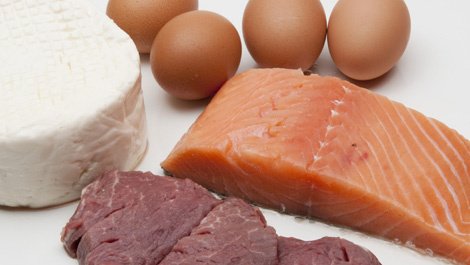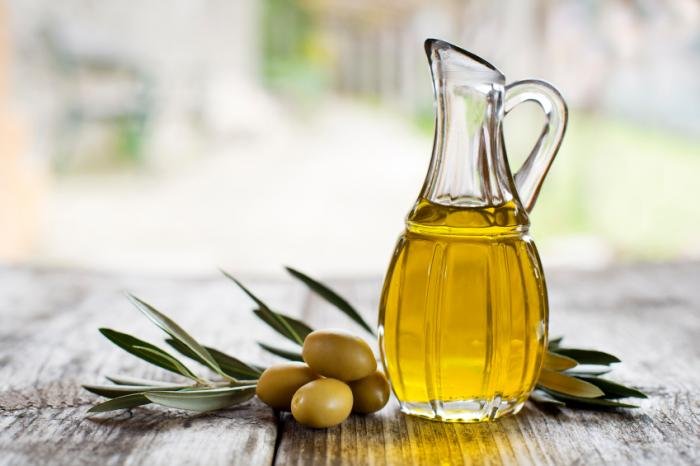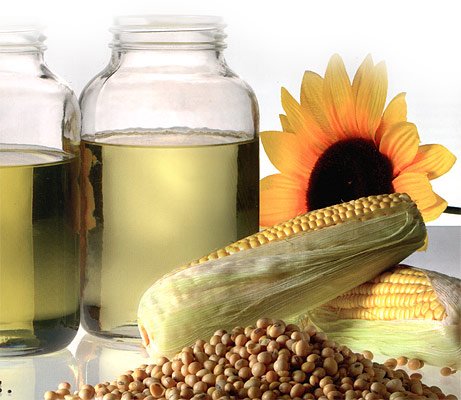Chewing the fat....Trans-fats - III
The final part of this series rounding up our coverage of fats will continue this theme of identifying those good and bad. Once we understand, we can go about our business, eat the good fats and avoid the bad ones.
A simple Google search for “artery clogging” opens up a torrent of information about ‘trans fats’. It is important to once again go through some fundamental chemistry revision.
An image one might associate with 'industrially produced trans fats'
BASIC FATS REVISED – AGAIN
Trans fats originate from a polyunsaturated fatty acid (PUFA) Carbon backbone. The PUFAs then undergo ‘hydrogenation’ where a Hydrogen is added to the free points in the chain (figure 1). This process turns liquid vegetable oil to solid trans, or otherwise known as hydrogenatedfat.
Figure 1: Hydrogenated trans fatty acids. Here you can see how the red Hydrogens (H) have been artificially added to the free Carbons (C) in the top chain converting the PUFA fatty acid into trans fat.
USEFUL FACT
The terms 'oil', 'fat' and 'lipid' are often confused.
Oil - Normally refers to a fat with short or unsaturated fatty acid chains that are liquid at room temperature.
Fat - Generally these are those that are solid at room temperature. Fats are comprised of three fatty acid chains and a glycerol molecule and also referred to as Triglycerides.
Lipid - An overarching general term (oils and fats are both lipids). Lipids also include waxes, sterols (steroid alcohols) and fat soluble vitamins (A,D,E, & K) amongst others.
(Wikipedia)
The history of hydrogenation is actually quite comical dating back to the early 1900s. Proctor & Gamble was founded in in 1837 to manufacture soap and candles. They branched out into the lard business in the late 1800s and would eventually use hydrogenation to make Crisco shortening (short for crystalized cottonseed oil)1.
The real clincher in our capitalist culture was that Crisco was cheaper to produce than lard or butter, this gave baked goods a longer shelf life, food could now be more profitable. If a trans-fat is hydrogenated so all the Carbons now have a Hydrogen attached, how does it, or even does it differ from a saturated fat?
The short answer is yes. Both saturated and trans-fat are by nature ‘saturated’, it is their configuration that differ.
Most naturally occurring unsaturated fats have a double bond that makes a ‘U’ shape in their Carbon skeleton, also known as a cis-isomer. The process of hydrogenation alters the configuration to produce a straighter skeleton known as a trans-isomer. It is this straighter arrangement that gives hydrogenated fatty acids a tighter, more rigid complex; higher melt point, greater resistance to being broken down, greater shelf life, greater profit1.
*Isomers are molecules with the same chemical formula, but different geometric arrangement, trans fats have the same constituent parts as saturated fats, just disguised differently.
One further step to complicate the picture is that not all trans-fats are artificially created. Trans fats are found naturally in dairy and meat products, often referred to as Cis-fatty acids, ruminant or natural trans fats and those produced through hydrogenation called industrial trans fats (figure 2).
Figure 2: Cis / natural trans-fats versus industrial trans fat molecular isomers (orientation). All that is important here is that we appreciate there is the same constituent parts, just expressed as a different shape. A useful analogy I use can be found below. Left I am curled up tight as a natural cis-fat. Right I am the same person, just opened up and expressed differently. This might affect how you recognise me, although I am the same make up in each image. This is analogous to how the body might recognise cis, trans and saturated fats. May help, may not :)
Various studies have looked into whether there is any difference between natural or industrial trans fats on our cardiovascular health 2 .
This study by Motard-Bèlenger et al 3 compared the two trans fats in four different diets and found high amounts of natural trans fats to be detrimental to so called bad (LDL) cholesterol, but moderate amounts having little to no effect (Moderation again?!).
Aragon draws the literature together in the October (2010) research review 1 , trans fats are not essential (we can make our own), the consideration about natural versus industrial seems to again come down to both being fine in moderation in otherwise healthy people (no smoking, pre existing cardiovascular disease, metabolic syndrome…..). It seems reasonable to suggest that natural trans fats are more likely to come in combination with other essential beneficial compounds where industrial trans fats (often cited as junk food) simply come with empty calories. Your informed decision can be made on this basis which one you choose.
“Trans fats are also found naturally in meat and dairy products”
It was during the 50’s and 60s the that the experts beat the drum against saturated fat (recall a critical period in my nana’s memories in part 1) and a major by-product of hydrogenation was heralded as our alternative to butter and lard – margarine. This proved to be a terrible mistake as trans fats from hydrogenated sources are strongly associated with heart disease 4 .
While saturated and trans fats have been shown to increase cholesterol, that in and of itself does not lead directly to disease (healthy people, no arterial damage again!) 5 . There seems to be some benefit to replacing some saturated fat with PUFA but no benefit with replacing it with carbohydrates as is often recommended!6
“It is human nature to simplify and categorise things, often leading to black and white thinking - something is 100% good or 100% bad”
It is human nature to simplify and categorise things, often leading to black and white thinking – something is 100% bad or 100% good. We often neglect context and resent the often universal answer in the nutrition and diet world – “it depends”. It really does depend though, as you can see in trans and saturated fats who is consuming them and how much. Healthy and diseased physiology are not one and the same and unfortunately correlation is often hastily generalised as causality. Research often does not show what we anticipate or even want it too, which is the very reason it is done in the first place, to take our biases out. I certainly have villainized industrial trans-fats and vegetable oils in the past, but the best evidence we have (eloquently summarised in the quote below) suggests I be less concerned if we are getting everything else right, even if the idea of them do still make me uneasy. That's my bias after all!
“Although scientists now agree that trans-fatty acids (TFA) are not as healthful as their cis counterparts, exaggerated claims that TFAs pose dire health threats even in trace amounts are not supported by scientific evidence and are unwarranted. TFAs are not poison; they are simply one of several dietary factors that affect blood lipid levels, and blood lipid levels are only one of several major factors that influence the risk of heart disease”
Meister & Kava, 2006
So maybe my nana (and everyone else of eras gone by) had things intuitively right when they liberally ate animal fats in butter and lard?
The jury is arguably still out most on whether and how much saturated fat can be claimed as healthy (note: it is not essential – we can produce our own easily from other fats, carbohydrates and even excess protein). In 2010 an invitation only saturated fats scientific consensus symposium was held at the university of Copenhagan and published for our non-invited benefit in the American Journal of Clinical Nutrition8. The major conclusions were as follows:
- Much of the claims about saturated fat is based on poorly designed studies
- There appears to be some benefit in substituting some saturated fat with PUFAs with regards to blood lipids and heart disease risk; diets high in Omega 6 had the lowest rates of the disease (industrial trans fats greatest risk, then saturated).
- The ratio of total cholesterol to HDL (“good”) is more predictive of heart disease than simply looking at “bad” (LDL) cholesterol, so the fact that saturated fat elevates LDL is not in and of itself an issue.
- The effect of diet on one biomarker of heart health in isolation is insufficient to establish risk. A comprehensive picture includes total and HDL cholesterol, blood pressure, fatness, glucose tolerance and inflammatory markers will give a clearer picture of risk
- Food based recommendations are more practical for the public than nutrient based advice. The entire matrix of the food is more important than just the fatty acids for the food risk. For example, cheese may have saturated fat but the presence of protein, calcium and other nutrition alter how we process the food.
- Some saturated fatty acids show promise in imparting great health benefits (rumenic and vaccenic acid).
- To effectively communicate current findings, the dietary pattern that decreases CVD risk should be delivered in practical terms. A healthy dietary pattern is primarily plant based and low in saturated fat, but can include lean meats and low fat dairy in small-moderate amounts.
- Because heart disease is the leading cause of death in so many countries, the relation of diet to its cause and management should be of high priority.
- Other crucially important health issues (obesity, cancer, and osteoporosis) should also be considered; currently there is no clear relation between saturated fat intake and these outcomes. **
** Point in bold to emphasise importance of this point
CLOSING THOUGHTS
So where does all this info leave us? As confused as when we started? Hopefully not.
The food standards agency (FSA) for the UK recommends that our total fat doesn't exceed 35 per cent of our daily energy and this is in line with what Alan Aragon prescribes as an accurate representation of the literature on the topic.
This is plenty of fat for our basic physiological functions like transporting fat-soluble vitamins (A,D,E & K), manufacturing hormones and providing integrity to cells. Fat is a good source of energy and can give great taste to food, when combined with protein is very effective in making us feel full.
Some people prefer a diet slightly higher in fat and others prefer carbs, it is best viewed as a continuum or pendulum, as one goes up the other must come down for total energy balance.
ESSENTIAL TAKEAWAYS
Essentially, eat a variety of whole and minimally processed foods and fat will take care of itself. A typical days worth of good varied fats may include some nuts, half an avocado, fats and oils from cooking or dressing, some yolks in eggs, a steak or salmon fillet. Useful tips for a rule of thumb might include not doing the following:
- Goingout of your way to get more fat on the misguided idea that coconut oil or grass fed butter have superpowers (I have certainly been guilty of this one in times gone by)
- Loading up on one type of fat, like omega-3 PUFAs, get a variety of saturated, MUFA, PUFA and some incidental trans fat is even OK.
I hope you have taken something from this series, for more guidance putting this all together, please don't hesitate to get in touch.
Luke R. Davies :)
REFERENCES
1. Aragon, A. (2010). Alan Aragon Research Review, October 2010 - Trans fat hysteria, how much is warranted?
4. Aragon, A. and Schuler, L. (2014). The Lean Muscle Diet, Rodale inc, New York, USA, P.18.
7. Meister, K. and Kava, R. (2006). Trans Fatty Acids and Heart Disease, American council on Science and Health, Broadway, 2nd Floor, New York.
9. Food Standards Agency (FSA) UK - Accessed 5.12.16














